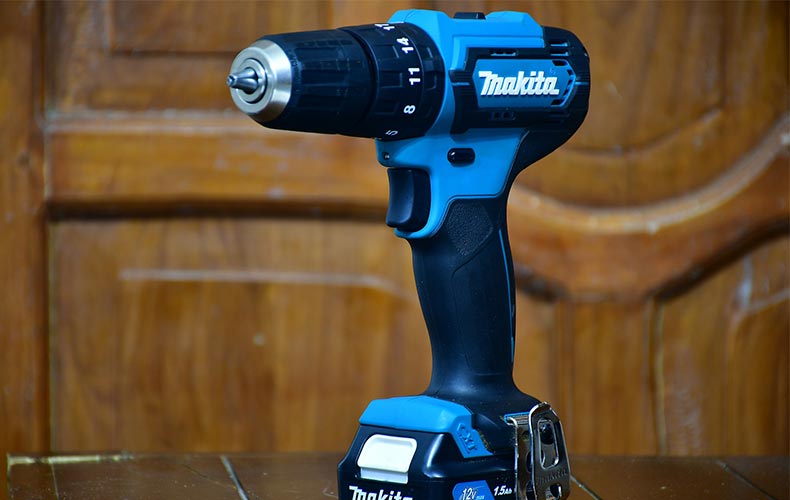
See also:
They have been the most popular household tool since the 1960s when it was created. It is interesting to note that during Christmastime, this tool seems to be highly popular as countless people get this as a gift. With this in mind, it is good to know that the power drill has an additional use, it can also be used as an electric screwdriver.
Drilling and screwing are the main uses of the tool and this is used in walls, wood and many other tough surfaces. While you may have figured it out, the cordless drill is called so because it is a power drill that does not have a cord. While this is a nimble power tool, different sizes may apply to different purposes. When choosing, ensure you get one that has the necessary power that you require for your task.
Are a drill and an electric screwdriver the same thing?
It is good to learn the difference between the two devices. Two of the biggest differences are that they have different motor sizes and battery voltages that are required to power them. The motor contained in an electric screwdriver is a smaller one and usually only requires between 4 volts and 10 volts to operate. At this lower voltage, it will produce less torque.
A cordless drill has a larger motor and will require more voltage from a battery to operate. Another thing to point out is that the drill allows more flexibility in accepting bits as compared to the electric screwdriver. Drills usually use between 12 volts and 18 volts and this would be sufficient for common tasks around the home or a higher value of 20 volts to 24 volts and this would be more for an industrial application.
What is the difference between a drill and a screw driver?
It is important to note that these two units are different tools but there are similar functionalities between them. One thing to pay attention to is the tasks that you have at hand and the scope of work that needs to be done. This will help you to choose which one will suit you best in what you have to do.
Benefits of using an electric screwdriver
The electric screwdriver usually is a smaller tool that can fit and go into tighter spaces. This is because it would be required to fit into these areas to work on screws. The electric screwdriver also has an angled head that allows easier maneuverability to work on harder angles. There is also a benefit to using a less powerful screwdriver, they operate better on softer wood or materials that tend to break or crack easily. With a smaller motor, it gives the unit improved portability as since the tool is smaller, it can fit into a tool belt or in a pocket. Another thing to mention is that using an electric drill can be good for someone who may not have good grip strength. Since it is not very heavy duty to use, they can use it comfortably without all the bulk.
The cordless drill offers more power so it can handle bigger screw driving tasks on harder surfaces. These surfaces such as metals, hardwood or even concrete make the cordless drill more versatile. The power gives an additional benefit that it can start the hole in any material for the screw to be applied. The drill offers additional functionality as it can take additional attachments to stir paint, clean drains, sanding and buffing. The cordless drill can also be used in remodel or rehab products where older or rusted screws need to be removed.
Since the cordless drills have more power, this is also due to their internal configuration. The cordless drill has more sophisticated gear systems and higher voltages so it can deliver far more torque than the electric screwdriver. To be more definitive, the average power drill can give approximately 50 Newton meters of torque while the average electric screwdriver can deliver around 10 Newton meters of torque. This powerful mechanism makes the cordless drill more equipped for harder surfaces such as metal, hardwood and plastic.
The main difference to understand is that a cordless drill driver can be used to both make holes and drive screws into materials. Alternatively, an electric screwdriver is solely for driving screws.
How to use a power drill to drive screws
Power drills are now usually designed to be able to drive screws and this is very useful to the users. The type of bit that you would need to drive the screw would completely depend on the head of the screw. The most common bit type is the Phillip’s head and this can be used on most screws. There are also internal hex drive bits that can be used for bugle batten screws, square drive bits that are used for decking screws and a nut setter hex bit that is used for roofing screws.
Speed
When using the power drill, it is best to use the lowest speed as you will have the greatest control over driving the screws. This is recommended for beginners as you will not lock the head of the screw and cause issues with the driving. Once you get used to it, you can try to speed up the speed so you can get through the task easier.
Action Setting
There are action settings on the drill that you will also have to pay attention to. The drill will usually show settings that indicate a hammer, a screw or a drill bit. It can be set to the screw setting which means the drill will be ready to drive screws. The other settings can be used for the general use of the drill and hammer mode can be used to drill into concrete or bricks.
Torque setting
The torque setting is the area on the drill that has the number setting that can be adjusted. The torque is the power of the drill turning which is essentially how much force is applied to the driving of the screw. It is good to test out the torque when starting a task to evaluate if the setting is correct for the job at hand. A rule of thumb is to use a lower torque setting for softer materials and a higher number for harder materials.
How to put screwdriver bit in the drill
The way to put the bit into the drill may vary due to the make and model of the cordless drill driver. This will vary but the general steps should be very similar to each other.
- The first thing that should be done is to release the speed control trigger and then this cuts the power to the drill and it will stop working completely.
- There should be a reverse or forward button that can be placed into the central position. This will lock the tool in the OFF position and you will be able to alter the chuck without the possibility of injury.
- The user should hold the bottom of the chuck and this is to hold the drill in place. The other hand should be used to turn the collar of the chuck and this should be in the anti-clockwise direction. The jaws of the chucks should open for you.
- Once the jaws have been opened, then the selected screw bit can be inserted.
- Once the bit has been inserted, the chuck’s collar should be turned in a clockwise direction until the jaws are closed firmly around the bit and it is held securely.
- The reverse/forward button should then be pressed into the forward position so it can be used.
To make a final determination, after exploring all the details between the two tools, we can say definitively that a cordless drill can be used as a screwdriver. This is recommended as the tool will offer a two-in-one unit that offers better abilities than the electric screwdriver. To go further an electric screwdriver is becoming obsolete due to its singular use.
